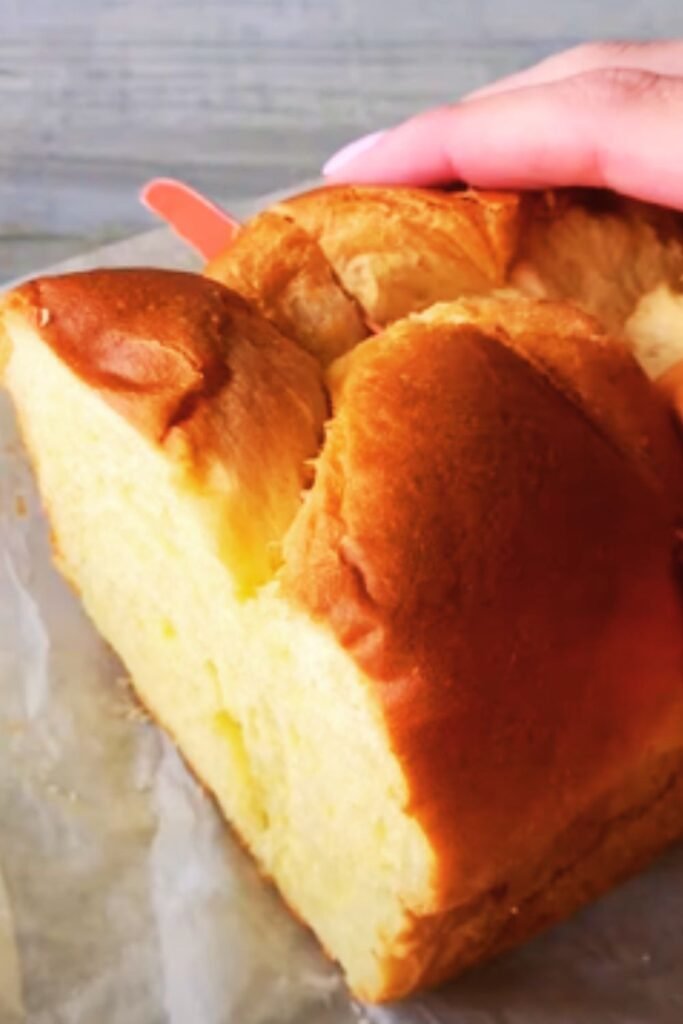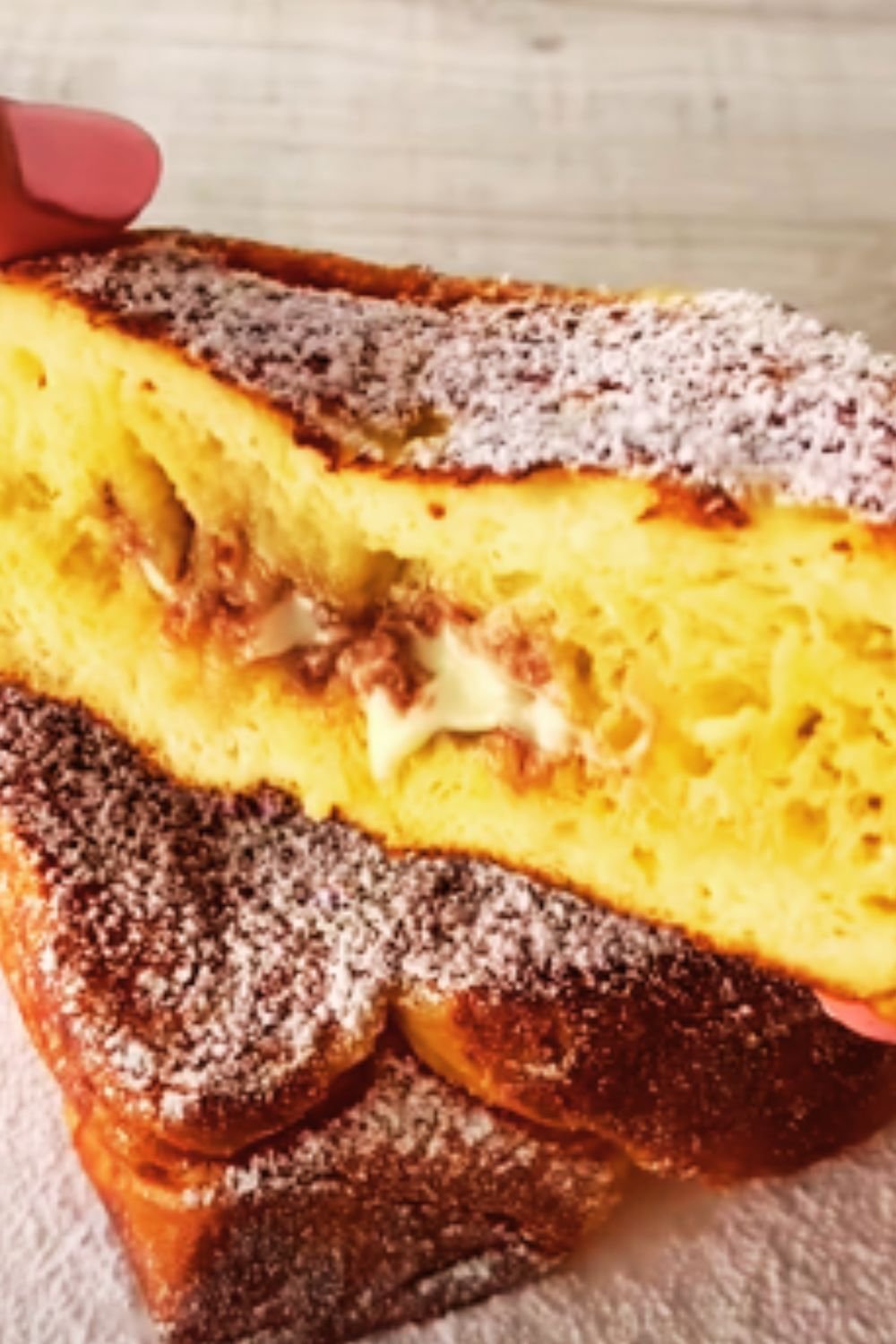When I first discovered the magic of combining marzipan with French toast, my breakfast game changed forever. This isn’t your ordinary weekend brunch dish – it’s an elevated culinary experience that transforms simple ingredients into something truly extraordinary. The sweet almond essence of marzipan paired with the custardy richness of perfectly executed French toast creates a harmony that’s both comforting and sophisticated.
I’ve spent countless mornings perfecting this recipe, and I’m excited to share every detail with you. Whether you’re planning a special birthday breakfast, anniversary celebration, or simply want to treat yourself to something exceptional, this marzipan stuffed French toast will exceed your expectations.
Understanding the Magic Behind Marzipan
Before we dive into the recipe, let me explain why marzipan works so beautifully in this context. Marzipan is a confection consisting primarily of sugar and almond meal, sometimes augmented with almond oil or extract. Its malleable texture makes it perfect for stuffing, while its intense almond flavor provides a sophisticated counterpoint to the egg-soaked bread.
Key Marzipan Characteristics:
- Texture: Pliable and smooth when at room temperature
- Flavor Profile: Sweet with intense almond notes
- Melting Point: Softens beautifully when heated, creating creamy pockets
- Origin: Traditional European confection with centuries of culinary history
The beauty of using marzipan lies in its ability to maintain structure while cooking, yet become wonderfully gooey and aromatic when bitten into. This creates textural contrast that elevates the entire dish.
Essential Ingredients and Their Roles
Creating exceptional marzipan stuffed French toast requires understanding each ingredient’s contribution to the final result. I’ve learned through trial and error that quality ingredients make an enormous difference.
Bread Selection Guide
| Bread Type | Texture Rating | Absorption Capacity | Flavor Compatibility | Best Use Case |
|---|---|---|---|---|
| Brioche | Excellent (9/10) | High | Perfect match | Special occasions |
| Challah | Excellent (9/10) | High | Harmonious | Weekend brunches |
| Texas Toast | Good (7/10) | Medium-High | Neutral base | Everyday luxury |
| French Bread | Good (7/10) | Medium | Classic pairing | Traditional approach |
| Sourdough | Fair (6/10) | Medium | Tangy contrast | Adventurous palates |
Marzipan Quality Indicators
When selecting marzipan, I always look for these characteristics:
- Color: Pale ivory to light golden, never stark white
- Texture: Smooth and pliable, not crumbly or overly sticky
- Aroma: Strong almond scent without artificial overtones
- Ingredients: Almonds and sugar should be primary components

Custard Base Components
The custard base determines whether your French toast achieves that perfect balance between crispy exterior and creamy interior. My formula has evolved over years of experimentation:
Primary Custard Elements:
- Eggs: Provide structure and richness
- Heavy Cream: Creates luxurious mouthfeel
- Whole Milk: Balances richness with lighter texture
- Vanilla Extract: Enhances overall flavor complexity
- Cinnamon: Adds warmth and aromatics
- Salt: Amplifies all other flavors
Step-by-Step Preparation Method
Phase 1: Marzipan Preparation
I begin by bringing my marzipan to room temperature, which typically takes about 30 minutes. This step is crucial because cold marzipan becomes brittle and difficult to work with.
Working with clean hands, I knead the marzipan gently until it becomes pliable. If it’s too firm, I’ll add a few drops of almond extract or warm water. The goal is achieving a consistency similar to soft modeling clay.
Next, I roll the marzipan into a log shape, then slice it into portions matching the number of bread slices I’m preparing. Each portion gets rolled into a small oval that will fit comfortably inside the bread pocket.
Phase 2: Bread Preparation
Creating perfect pockets requires precision and patience. Using a sharp paring knife, I make a horizontal cut into each bread slice, about two-thirds through the thickness. The opening should be wide enough to accommodate the marzipan without tearing the bread.
I gently insert the marzipan ovals into each pocket, distributing them evenly. The bread should close naturally around the filling without bulging excessively.

Phase 3: Custard Creation
My custard recipe has been refined through countless iterations:
Perfect Custard Formula:
- 4 large eggs
- 1/2 cup heavy cream
- 1/4 cup whole milk
- 2 tablespoons sugar
- 1 teaspoon vanilla extract
- 1/2 teaspoon ground cinnamon
- 1/4 teaspoon salt
I whisk these ingredients vigorously until completely homogeneous. The mixture should be smooth without any visible egg streaks or lumps.
Phase 4: Soaking Process
This stage requires patience and attention. I place each stuffed bread slice in the custard mixture, allowing it to soak for 2-3 minutes per side. The bread should absorb the custard without becoming so saturated that it falls apart.
I’ve learned that pressing gently on the surface helps the custard penetrate evenly while maintaining structural integrity.
Cooking Techniques for Perfect Results
Temperature Control
Achieving the ideal cooking temperature is perhaps the most critical aspect of this recipe. I preheat my pan or griddle to medium-low heat – approximately 300°F if using an electric griddle.
Higher temperatures might create beautifully golden exteriors while leaving the centers undercooked. Lower temperatures result in pale, unappetizing surfaces that lack the desired caramelization.
Cooking Timeline
| Cooking Stage | Duration | Visual Cues | Internal Temperature |
|---|---|---|---|
| First Side | 3-4 minutes | Golden brown, set edges | 140°F |
| Second Side | 3-4 minutes | Matching golden color | 160°F |
| Resting | 2 minutes | Slightly firm surface | 165°F |
| Serving | Immediate | Steam rising gently | 165°F+ |
Fat Selection
I prefer using a combination of butter and neutral oil. The butter provides incredible flavor and browning properties, while the oil prevents burning at higher temperatures. My ratio is typically 2 parts butter to 1 part vegetable oil.
Serving Suggestions and Accompaniments
The beauty of marzipan stuffed French toast lies in its versatility. I’ve served this dish in numerous contexts, each requiring slightly different presentations and accompaniments.
Classic Breakfast Presentation
For traditional breakfast service, I arrange the French toast on warmed plates, dust lightly with powdered sugar, and provide warm maple syrup alongside. Fresh berries add color and acidity that balances the rich flavors beautifully.
Elegant Brunch Style
When serving for special occasions, I elevate the presentation with:
- Garnish: Toasted sliced almonds and fresh mint
- Sauces: Warm berry compote and whipped cream
- Sides: Fresh fruit salad and crispy bacon or sausage

International Inspirations
I’ve experimented with various cultural influences:
- French Style: Served with crème fraîche and honey
- Italian Approach: Accompanied by espresso and fresh figs
- American Classic: With crispy bacon and grade A maple syrup
Nutritional Considerations
Understanding the nutritional profile helps make informed decisions about portion sizes and frequency of enjoyment.
Macronutrient Breakdown (Per Serving)
| Nutrient | Amount | % Daily Value | Notes |
|---|---|---|---|
| Calories | 485 | 24% | High-energy breakfast |
| Protein | 12g | 24% | Complete protein source |
| Carbohydrates | 52g | 17% | Primary energy source |
| Fat | 26g | 40% | Includes healthy almond fats |
| Fiber | 3g | 12% | From bread and almonds |
| Sugar | 28g | 31% | Natural and added sugars |
Health Benefits
Despite its indulgent nature, this dish provides several nutritional advantages:
- Almonds: Rich in vitamin E, magnesium, and healthy monounsaturated fats
- Eggs: Complete protein source with essential amino acids
- Dairy: Calcium and vitamin D for bone health
- Whole grains: B vitamins and fiber when using appropriate bread
Storage and Reheating Methods
While best enjoyed fresh, I’ve developed techniques for storing and reheating when necessary.
Refrigerator Storage
Cooked French toast can be refrigerated for up to 3 days when properly stored. I place cooled slices between parchment paper layers in an airtight container.
Freezing Techniques
For longer storage, individual slices can be frozen for up to 1 month. I wrap each piece individually in plastic wrap, then place in freezer bags with air removed.
Reheating Methods
| Method | Time | Temperature | Quality Result |
|---|---|---|---|
| Oven | 8-10 minutes | 350°F | Excellent |
| Toaster Oven | 5-7 minutes | 325°F | Very Good |
| Microwave | 30-45 seconds | Medium power | Fair |
| Pan | 2-3 minutes per side | Medium-low | Good |
Troubleshooting Common Issues
Through years of making this recipe, I’ve encountered and solved numerous challenges.
Problem: Marzipan Leaking During Cooking
Causes:
- Overstuffing bread pockets
- Inadequate sealing of bread edges
- Excessive heat causing rapid melting
Solutions:
- Use smaller marzipan portions
- Press bread edges firmly together
- Reduce cooking temperature slightly
Problem: Soggy or Undercooked Centers
Causes:
- Over-soaking in custard
- Cooking temperature too high
- Insufficient cooking time
Solutions:
- Limit soaking time to 2-3 minutes per side
- Use medium-low heat consistently
- Cook until internal temperature reaches 165°F
Problem: Burnt Exterior with Raw Interior
Causes:
- Excessive heat
- Inadequate pan preparation
- Rushing the cooking process
Solutions:
- Lower heat and cook more slowly
- Use proper fat combination
- Allow adequate cooking time per side
Seasonal Variations and Adaptations
I love adapting this recipe to reflect seasonal ingredients and holiday themes.
Spring Adaptations
During spring months, I incorporate:
- Fresh strawberries mixed into the custard
- Lemon zest added to marzipan
- Edible flowers as garnish
Summer Variations
Summer versions might include:
- Peach compote as accompaniment
- Vanilla bean in the custard base
- Fresh berries integrated throughout
Fall Modifications
Autumn brings opportunities for:
- Pumpkin spice seasoning in custard
- Apple butter as serving sauce
- Toasted pecans as garnish
Winter Celebrations
Holiday seasons inspire:
- Eggnog flavoring in custard base
- Cranberry sauce accompaniment
- Candied orange peel mixed with marzipan
Questions and Answers
Q: Can I make the marzipan from scratch instead of buying it pre-made?
Absolutely! Making homemade marzipan gives you complete control over sweetness and texture. You’ll need blanched almonds, powdered sugar, and a small amount of liquid (water, corn syrup, or almond extract). Process almonds until very fine, then gradually add powdered sugar and liquid until you achieve the proper consistency. Homemade marzipan often has superior flavor and texture compared to commercial versions.
Q: What’s the best way to prevent the bread from tearing when creating pockets?
The key is using slightly stale bread and working with a very sharp, thin knife. Fresh bread tends to compress and tear, while day-old bread maintains better structural integrity. Make your initial cut about 2/3 through the bread thickness, then gently work the knife horizontally to create the pocket. If the bread seems too soft, you can lightly toast it beforehand to firm up the structure.
Q: How do I know when the French toast is properly cooked through?
The most reliable method is using an instant-read thermometer – the internal temperature should reach 165°F. Visually, properly cooked French toast will have golden-brown surfaces that spring back lightly when pressed. The edges should appear set and slightly firm, not soggy or wet. If you notice the exterior browning too quickly, reduce heat and cook more slowly to ensure even cooking throughout.
Q: Can I prepare this dish ahead of time for a large brunch gathering?
Yes, but with some modifications. You can stuff the bread and prepare the custard the night before, storing them separately in the refrigerator. Soak and cook the French toast the morning of serving, then keep warm in a 200°F oven until ready to serve. For best results, avoid soaking more than 30 minutes before cooking, as extended soaking can make the bread too fragile.
Q: What are some good alternatives if I can’t find quality marzipan?
You can substitute with almond paste, though it’s slightly less sweet and has a coarser texture. Alternatively, create a filling using cream cheese mixed with powdered sugar, almond extract, and finely ground almonds. Nutella or other nut-based spreads can work, though they’ll create a different flavor profile. For nut-free versions, consider sweetened cream cheese with vanilla or cinnamon sugar mixed with butter.
Q: Why does my custard sometimes curdle when I add it to the hot pan?
Custard curdling typically occurs when there’s too much temperature differential or if eggs are added to very hot liquid. To prevent this, ensure your custard is at room temperature before soaking bread, and avoid using excessive heat when cooking. If your custard does curdle, strain it through a fine-mesh sieve to remove any lumps before proceeding.
Q: How can I make this recipe healthier without sacrificing too much flavor?
Several modifications can reduce calories and increase nutritional value: use whole grain bread for added fiber, substitute part of the heavy cream with Greek yogurt, reduce sugar content in the custard, and serve with fresh fruit instead of syrup. You can also make smaller portions and pair with protein-rich sides like Greek yogurt or cottage cheese to create a more balanced meal.
Q: What’s the secret to achieving perfectly golden, restaurant-quality color?
The secret lies in temperature control and fat selection. Use medium-low heat consistently, and combine butter with a neutral oil to prevent burning while achieving beautiful browning. A small amount of sugar in the custard helps with caramelization, but don’t overdo it. Patience is crucial – rushing with higher heat will give you uneven coloring.
This marzipan stuffed French toast represents the perfect marriage of technique and flavor, transforming ordinary breakfast ingredients into something truly extraordinary. The combination of custardy bread, melting almond sweetness, and golden caramelization creates an experience that’s both comforting and sophisticated. Whether you’re celebrating a special occasion or simply want to elevate your weekend brunch, this recipe delivers consistently impressive results that will have your family and friends asking for the recipe.
The key to success lies in attention to detail – from selecting quality ingredients to controlling cooking temperature to timing each step perfectly. With practice, you’ll develop an intuitive understanding of how the elements work together, allowing you to customize and adapt the recipe to your preferences and seasonal ingredients.
I encourage you to experiment with the variations and make this recipe your own. The foundation is solid and forgiving, providing endless opportunities for creativity while maintaining the core appeal that makes this dish so special. Remember, the best cooking comes from understanding not just what to do, but why each step matters in creating the final result.


